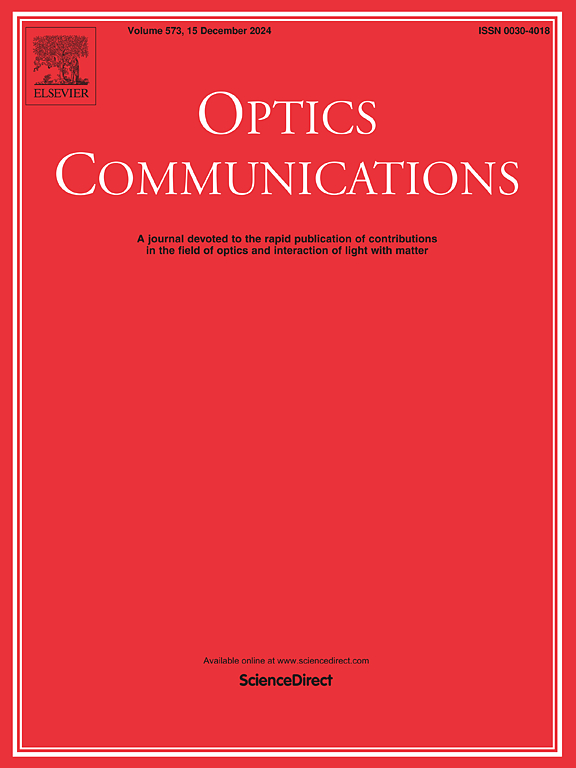Multi-functional polarization imaging and optical encryption of diatomic metasurfaces by using transfer matrix analysis
IF 2.2
3区 物理与天体物理
Q2 OPTICS
引用次数: 0
Abstract
The multi-functionalities of metasurface structure usually need to increase a high system complexity and a low efficiency, which can be mathematically expressed by the transfer matrix. This study presents an all-dielectric diatomic metasurface design approach, deduced from the transfer matrix to achieve high degrees of freedom and multifunctionalities in multimodal polarization imaging analysis. Here a compact and efficient all-dielectric diatomic metasurface platform is proposed, which can effectively achieve the selectivity of arbitrary orthogonal polarization. It is proved that the phase and amplitude of two orthogonal circular polarizations can be controlled independently by designing the rotation angle relationship between the diatoms. Furthermore, we propose an optical polarization imaging encryption that generates four near-field amplitude and far-field diffraction holograms, which can only be observed when the incident light is at a specific polarization state, whereas no image can be discerned for the orthogonal polarization incidence case, indicating the realization of incidence-polarization secured meta-image. Through data fusion, we are able to combine multiple polarization imaging modes to improve the accuracy and security of information. We envision the metasurface to enhance the security of information transmission and open new possibilities for creating compact multifunctional optical devices for optical data storage and security.
求助全文
约1分钟内获得全文
求助全文
来源期刊

Optics Communications
物理-光学
CiteScore
5.10
自引率
8.30%
发文量
681
审稿时长
38 days
期刊介绍:
Optics Communications invites original and timely contributions containing new results in various fields of optics and photonics. The journal considers theoretical and experimental research in areas ranging from the fundamental properties of light to technological applications. Topics covered include classical and quantum optics, optical physics and light-matter interactions, lasers, imaging, guided-wave optics and optical information processing. Manuscripts should offer clear evidence of novelty and significance. Papers concentrating on mathematical and computational issues, with limited connection to optics, are not suitable for publication in the Journal. Similarly, small technical advances, or papers concerned only with engineering applications or issues of materials science fall outside the journal scope.
 求助内容:
求助内容: 应助结果提醒方式:
应助结果提醒方式:


